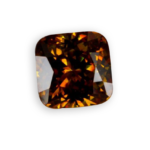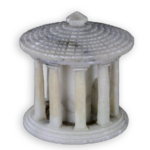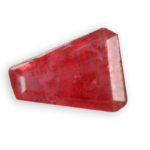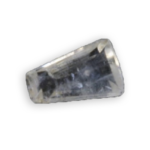
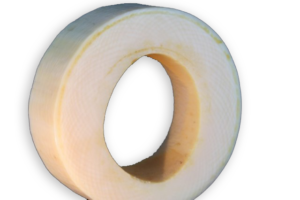
ivory
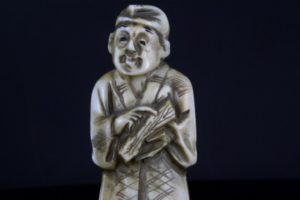
japanese ivory netsuke
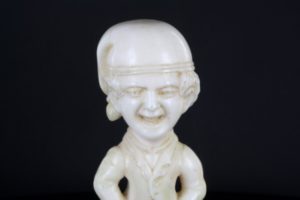
ivory – made character from Dieppe in France
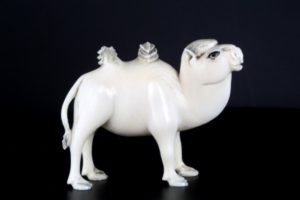
bactrian camel in ivory

ancient ivory from the Byzantine era
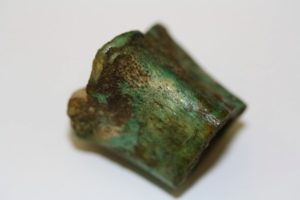
odontolite on a bone
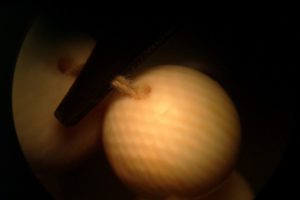
ivory internal stripes
Detailed sheet
ivory
Its name comes from the Latin ebur”, “eboris” which is an animal substance known since prehistoric times : the famous lady Brassempouy of the Saint-Germain-en-Laye Museum is famous worldwide, ivory has been used in antiquity, the middle ages, the renaissance period to the “art Deco” for jewelry features, without forgetting the famous balls of Canton, the netsukets …
This is the dentin of defenses teeth of animals, mainly elephants, but also hippos, whales (North Atlantic), narwhals (Canada), walruses (Canada, Norway, Russia), wild boars and warthogs (India, Japan, Africa), even fossil mammoths.
When the ivory is not from an elephant, French law requires the disclosure of the origin of the animal from which it comes.
A 1989 law banned the ivory trade but was relaxed in 1997.
The Odontolite, still called, wrongly, “new turquoise rock” comes from fossil bones or teeth of large current or extinct animals and becames turquoise blue by heating. Its importance in gemology is negligible.

CHEMICAL CHARACTERISTICS
CaPO4
calcium phosphate

PHYSICAL CHARACTERISTICS
Main color
white
Other colors
yellow
white to cream and yellow
Color of streak
white
Luster
greasy
Hardness
2.5 to 4.0
Density
1.20 to 1.35
Cleavage
none
Fracture
splintery, uneven
splinters on old ivory

OPTICAL PROPERTIES
Transparency
opaque, translucent
the thin slices are translucent
Refractive index
1.535 - 1.570
Double refraction
0.000
none
visible double refraction
No
Pleochroism
absent
Number of colors
1
Fluorescence
very weak
sometimes bluish

CRYSTALS PROPERTIES
organic material and calcium phosphate

OTHER INFORMATIONS

APPROACHING GEMS
Exploited
sites
It is found where the animals that are generating it live (elephants and hippos in Africa, Asia …) or where we find their fossil remains (mammoth in Siberia …).
Depending on the region, the quality and color varies: the one from Cameroon is more popular than that of Ghana or Sierra Leone, the one from Angola is very hard while that of Abyssinia or Guinea is softer. In the Middle Ages, the West Coast of Africa provided some twenty tons per year.
Chemically, ivory contains a calcium phosphate attacked by nitric and phosphoric acids.
use in jewelry
The gemologists classify ivory into two groups:
The hard : shiny and sparkling.
The softer, more tender but resistant to temperature changes without cracking and used, by this fact, for billiard balls and piano keys.
Ivory is sensitive to humidity and temperature: it can crack, even if the slots close, they leave a visible black mark.
The hippopotamus ivory is actually better than the elephants one, because of a finer grain, and a thicker and harder (2.5 to 2.75) glaze.
The narwhal ivory – once considered a mythical creature, the unicorn – is one of the canines of this whale, long and straight, which was used to make canes. It has a greater branching than the others and its specific gravity is 1.95.
The walrus ivory is less dense than that of the elephant or hippopotamus, its grain and texture are on the surface, its section trefoil its canals are bigger and its creamy yellow.
In France, the city of Dieppe, was specialized in the seventeenth and eighteenth centuries in the craft of African ivory arriving in his port : utilitarian objects, tobacco rasps, needle cases shaped with characters, fans, but also models of boats and many others masterpieces exported worldwide. The ivory is also used for making necklaces made of balls and supports for miniature paintings.
In Africa series of elephants were carved in a full tusk, they were made into lamps during the “art deco” period with the hollow part of the tusk, the chryselephantines statuettes associate golden metal and ivory.
Daily care
and precautions
The Ivory items should be cleaned regularly by wiping them with a cloth soaked in rubbing alcohol added with Spanish white. Some spots (cosmetic) are difficult to remove. Cleaning with hydrogen peroxide to whiten it, is not harmless and should not be used on old ivory. Soaking the ivory in milk allows it to rehydrate and prevents cracks and stains . Some ivory gets yellow with age and some other … very little.
imitations and
treatments
The imitations are numerous and can mislead a buyer with little experience. We must rely on the weight, touch, color, on the always parallel tiny and rolling veins.
Bones (especially of horses), and plastic materials are the primary infringers. Note that ivory debris in powder glued together were sold under the name of ivorine.
The polished ivory can be patinated using color diluted in mineral spirits. For many years, ivory was colored green with verdigris, red or scarlet with cochineal, red-brown with wood from Brazil, in golden yellow with saffron, black with the nuts of Wales.
It was aged by placing it on a fire of damp straw or oak chips, the Chinese were using tea whose tannin flows into the channels.
Venez visitez
notre site web
voillot-joaillier.fr
Lorem ipsum dolor sit amet, consectetur adipiscing elit. Ut elit tellus, luctus nec ullamcorper mattis, pulvinar dapibus leo.Lorem ipsum dolor sit amet, consectetur adipiscing elit. Ut elit tellus, luctus nec ullamcorper mattis, pulvinar dapibus leo consectetur adipiscing elit. Ut elit tellus, luctus nec.

